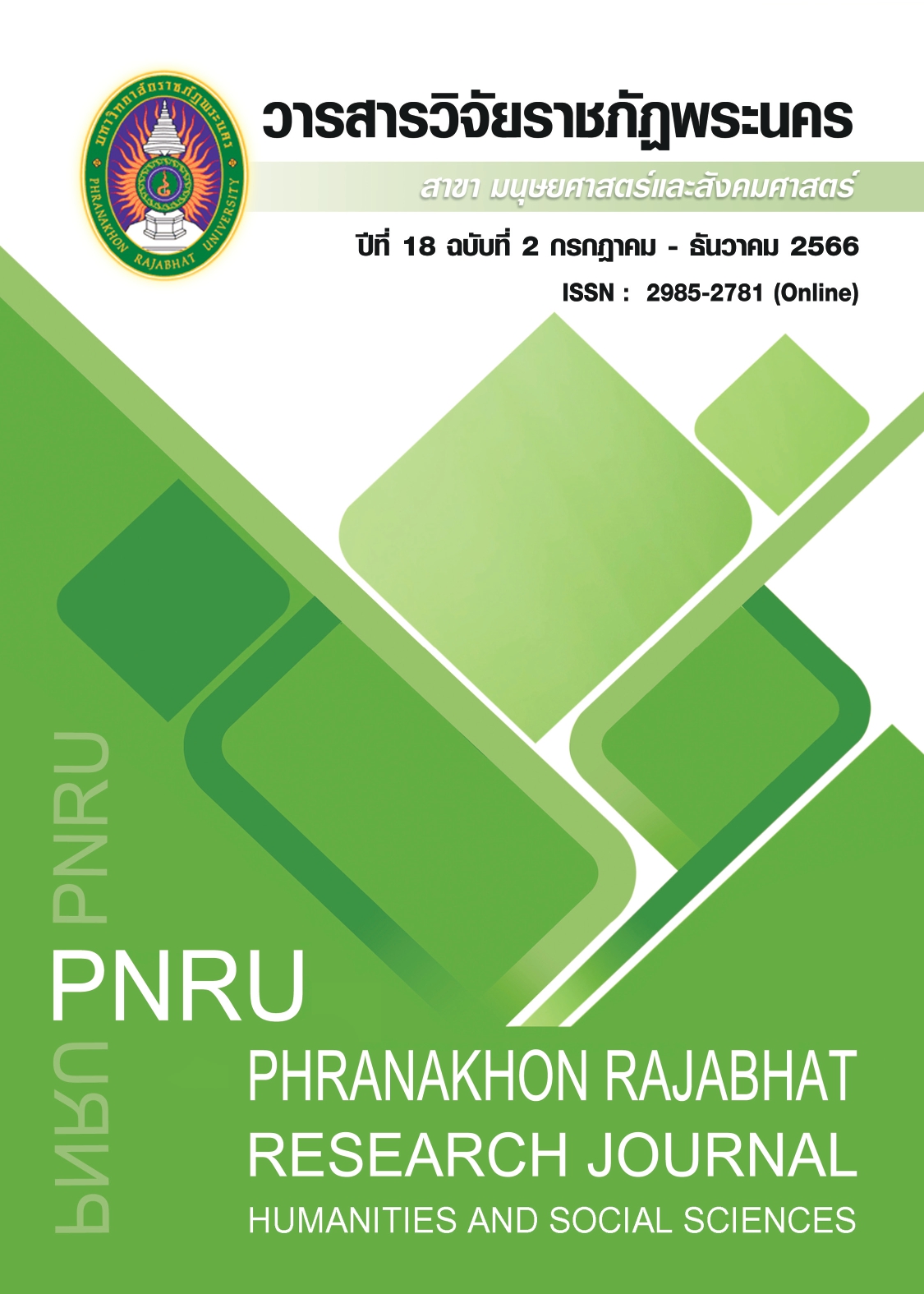THE STUDY OF TRANSLATION TECHNIQUES OF IMAGERY IN THE LYRICS OF CHINESE IN CHINESE SERIES “THE UNTAMED”
Main Article Content
Abstract
The objective of this research is to study the use of imagery in the lyrics of Chinese songs featured in the TV series "The Untamed" and the methods of translating these imageries in the lyrics. The research utilized the framework of Burkhardt's (2011) method of translating imagery as a guide for data analysis. The results showed that the most commonly used type of imagery in the lyrics of Chinese songs in the TV series was metaphorical imagery (39.1%), followed by simile and personification (14.6%), synecdoche (13.4%), symbol (7.3%), anthropomorphism (6.1%), metonymy (3.7%), and the least commonly used type of imagery was metalepsis (1.2%). No instances of hyperbole or irony were found.
In terms of the results of the analysis of translation methods for idiomatic expressions, it was found that the most used translation method for idiomatic expressions in the lyrics of Chinese songs appearing in the TV series "The Untamed" is the direct translation method, which is calculated at 60.98%. The second most used method is the meaning-based translation method, which is calculated at 14.63%. The next in line is the borrowing of idiomatic expressions (10.98%). The method of using comparative expressions is calculated at 6.10%. The method of playing with idiomatic expressions (4.88%). The least encountered method is the translation method of dissecting idiomatic expressions, which is calculated at 2.44%.
Article Details

This work is licensed under a Creative Commons Attribution-NonCommercial-NoDerivatives 4.0 International License.
Each publish articles were copyright by Phranakorn Rajabhat University
Any contents which appeared in each articles in the journal were authors personal opinion. It did not relate to Phranakorn Rajabhat University and other instructors in the university. Each authors would take responsibility on their articles. If there are any mistake, the authors will take responsibility themselves
References
Baker, M. (2011). In other words: A course book on translation. (2nd ed.). New York: Routledge Taylor & Francis Group.
Chakorn, O. (2017). Literary translation techniques. TLA Bulletin (Thai Library Association), 61(2), 93–109.
Eamlaor, A. (2009). A study of image translation in Thai translated novel titled Ruo and Ruthless by Suwit Khaoplod, Mahidol University, Nakhon Pathom.
Jongsatitwattana, S. (2015). Jermchankangsadan : Art created language in Thai literature (2nd ed.). Bangkok: Publish Academic Works Faculty of Arts Chulalongkorn University.
Khurachot, S. (2019). An analytical study of translation editing and translation process of the children’s literature “The Lion Witch and Wardrobe”. Journal of Educational Review, Mahachulalongkornrajavidyalaya University, 6(2), 93-102.
Lo, P. (2008). Strategies of translating english idioms and phrasal verbs into Thai in animation movies subtitles. (Master’s thesis). Burapha University, Chonburi.
Meechai, S. (2017). Translation strategies of idioms and figurative languages in Walt Disney’s lyrics by Thanee Poonsuwan. (Master’s thesis). Burapha University, Chonburi.
Phathong, S. (2008). Translation of similes in the pilgrim Kamanita. Journal of the Faculty of Arts, Silpakorn University, 30(1), 176-197.
Rodheadphai, C. (1979). Seminar in the use of Contemporary Thai Language. Bangkok: Krung Siam Press.
Saibua, S. (1997). The principle of translation (6thed.). Bangkok: Thammasat University Publishing.
Suwannalai, S. (2003). Translation techniques of figurative language in Venice Vanich by H.M. King Rama VI. (Master’s thesis). Mahidol University, Nakhon Pathom.


